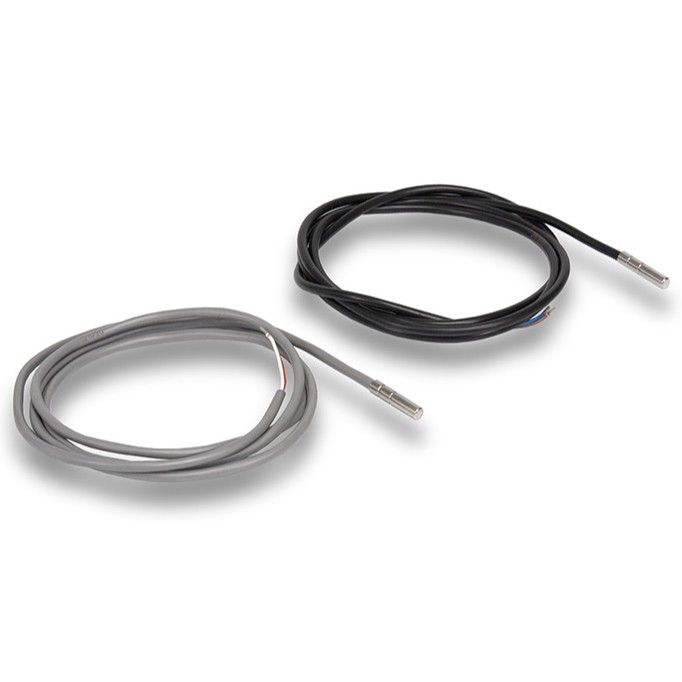Temperature sensors are used to monitor the temperature of a liquid, a liquid metal, a solid object or a room. The working principle of temperature sensors is the inversion of temperature changes by an electrical signal. Using an electrical signal, the data can be so read with high precision, accuracy and sensitivity.
Thermocouples and thermistors are the most commonly used. But there are also non-contact, digital, quartz and sometimes combi temperature sensors.
What is a thermocouple?
A thermocouple is a sensor for measuring temperature. The installation is very simple - the wires of two dissimilar metals are connected (fused) together at a single point, called the thermal junction point. To measure the temperature with a thermocouple, this thermal junction point must be applied to a surface where the temperature is measured. The change in temperature generates a voltage which is used as a reference to the temperature table, which ultimately outputs a fixed temperature.
Thermocouples are widely used in many industries, including scientific projects.
Popular thermocouple applications:
- For-profit sector
- Teraudlietu
- Electribas razosana
- Pharmacy
- Biotechnologies
- Cement slashed
- Oil and gas parstrade
Thermocouples have a large temperature range and low cost, making them a popular choice for many industries.
Two different metals or alloys form different types of thermocouples. Each combination has its own uses and applications.
8 standard types of thermocouples
- B tipa thermoparis
- Type B thermocouple consists of a combination of platinum rhodium (6% rhodium) and platinum rhodium (30%) wires. Due to the high platinum content, the thermocouple is also called a precious metal thermocouple. Due to its high temperature retention and merissan strength, it is used for coarse applications with high temperature processes, such as glass beaming.
- E tipa thermoparis
- Type E thermocouples are connectedhromela akonstantana
wires. The measurable temperature range of this compound is from 0 to 800 C. These thermocouples are not designed for sera-containing environments and are mainly used for spectroscopy.
- J tipa thermoparis
- A type J thermocouple is made of iron andkonstantana wire, which forms a temperature range from 0 to 750 C. For the low temperature range, the sim thermocouple has a reduced lifetime at high temperatures. Type J thermocouples are well suited for use in vacuum and inert environments.
- K tipa thermoparis
- A K-type thermocouple is formed by joininghromela aalumela wires. The temperature range is from 0 to 1100 C. Neutral or oxide environments are best suited for this type of thermocouple. Type K thermocouples are among the most common in the coarse industry.
- N tipa termoparis
- The N-type thermocouple is made of nicrosil and nisil wires, which form a temperature range from 0 to 1100 C. Unlike the K-type thermocouples, the N-type thermocouple offers high resistance to hysteresis radical degradation. They are widely used in the oil industry.
- R tipa termoparis
- Type R thermocouple is a combination of platinum-rhodium (13%) and platinum wire. This thermocouple has a wide temperature range from 0 to 1600 C. It is more expensive than the S-type thermocouple because of the higher rhodium content. It has high precision and is perfectly suited for the sera regeneration stations.
- S tipa thermoparis
- The S-type thermocouple is very much faster than the R-type. It is made of platinum-rhodium (10%) and platinum wire, giving a temperature range from 0 to 1600 C. Type S thermocouple is used in very high-temperature processes and is found in many industries.
- T tipa termoparis
- The T-type thermocouple is made of copper andkonstantana the wire. Its low temperature range, from -185 to 300 C, makes the thermocouple ideal for vacuum and inert environments. It can be found in high concentrations in particulate coarsening and cryogenics.
